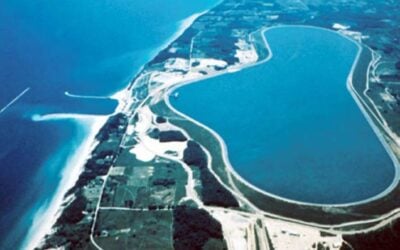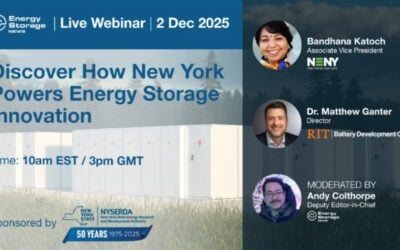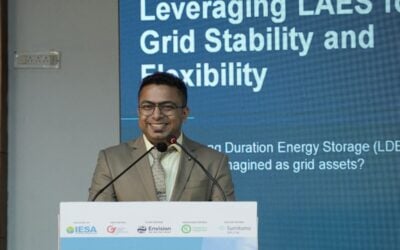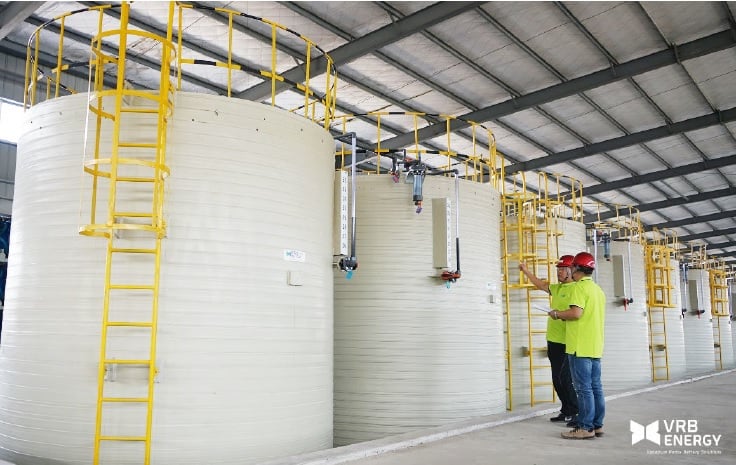
Large-scale Vanadium redox flow battery (VRFB) technology looks set to be deployed at a 100MW solar energy power plant in China, two years after a smaller-scale demonstration project was commissioned in the region.
Canada-headquartered vertically-integrated technology provider VRB Energy said that the solar PV power station will be integrated with a 100MW / 500MWh (five-hour duration) battery that the company is developing in Xiangyang, in China’s Hubei Province.
A framework agreement has been signed earlier this month by VRB Energy with the municipal government of Xiangyang, local project partner Hubei Pingfan New Energy and Xiangyang High-Tech State-Owned Capital Investment and Operation Group (GXGT).
In addition to the large-scale solar-plus-storage project, which follows on from a demonstrator in the region by VRFB Energy that paired 3MW of solar power with a 3MW / 12MWh VRFB system, Xiangyang could become host to a gigawatt-scale VRFB manufacturing facility and a research and development (R&D) institute for flow battery technologies.
Try Premium for just $1
- Full premium access for the first month at only $1
- Converts to an annual rate after 30 days unless cancelled
- Cancel anytime during the trial period
Premium Benefits
- Expert industry analysis and interviews
- Digital access to PV Tech Power journal
- Exclusive event discounts
Or get the full Premium subscription right away
Or continue reading this article for free
VRB Energy said the framework agreement, signed on 4 March and announced to press including Energy-Storage.news yesterday, also covers construction of the first 50MW of production capacity at the planned 1,000MW per annum ‘gigafactory’ as well as the R&D centre. An initial 40MW / 200MWh first phase of the power plant’s VRFB portion as well as the first phase of the factory’s construction are expected to begin in May.
China’s high-level strategy on energy storage includes massive flow batteries
Since the September 2017 publication of the country’s first high-level strategy and policy document on energy storage, China has been keen on getting several huge vanadium flow battery projects deployed. The 100MW / 500MWh project for VRB Energy was among those, while local partner Hubei Pingfan was included in the Chinese government’s 12th five-year plan for national strategy back in 2011 as a national pilot enterprise for vanadium.
Part of the reasoning there is that China has abundant vanadium resources of its own both in mineral form and as a byproduct of steel production. The metal used in the batteries’ electrolyte can represent a significant portion of the total cost — as much as 40% by some estimates. VRB Energy chief executive officer Dr Mianyan Huang said that among its advantages as a place to do business for the company, Hubei Province is rich in mineral resources.
“This presents a unique opportunity for scale-up of the vanadium flow battery industry, and we applaud the government’s plans to support development of a US$14 billion world-leading vanadium energy storage industry cluster,” Huang said.
In August last year, Huang — who was previously the company’s chief technical officer and who holds 12 flow battery materials and systems design patents himself — said that the company’s newest Gen3 cell stack design enables a 30% increase in energy density based on proprietary materials developed in-house. VRB Energy meanwhile claimed in a statement that it was a “leading contender” to deliver many of those large-scale systems under the Chinese government programme.
VRB Energy is led by chairman Robert Friedland, a well-known name in the minerals and mining industry whose minerals exploration and development company High Power Exploration bought an 82% stake in VRB Energy when it was a Chinese company called Pu Neng.
“This project is a massive catalyst for VRB Energy’s global growth and further demonstrates that we are developing the absolute best technologies to support the worldwide green energy revolution. China wants to install over 1,000 gigawatts (GW) of new solar PV and wind power by 2030 and they are not alone in the commitment to decarbonisation and the ‘greening’ of their power grids; with both the US and the European Union prioritising renewable power solutions,” Friedland said in yesterday’s statement.
“Energy storage remains a key challenge in the mass adoption of renewable energy, and we’re extremely proud to be leading the way in creating cutting-edge solutions at VRB.”
In an online conference hosted by our publisher Solar Media in May last year, VRB Energy vice president of business development Jim Stover talked up some of the potential competitive advantages that vanadium flow battery technologies can have, including safety (VRFB stacks do not encounter thermal runaway like lithium-ion cells can), long system lifetimes and durability (the batteries do not experience cell degradation even after up to 20 years in use) and the ability to recycle components including the electrolyte after project lifecycles are complete.
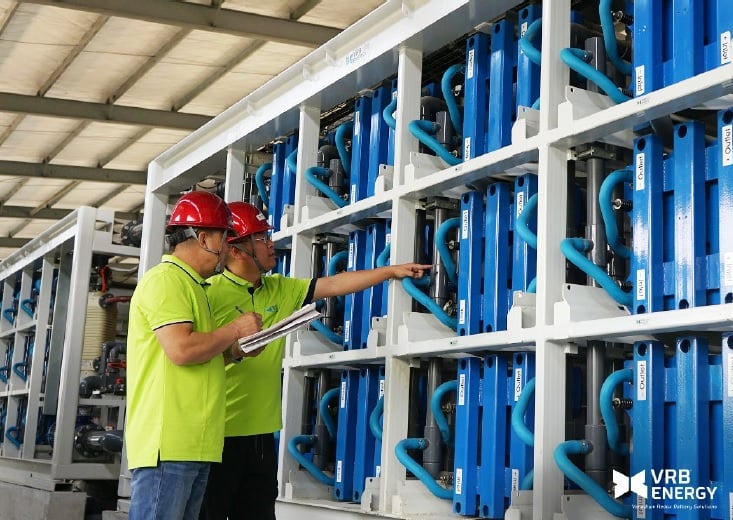
The project will be considerably larger than the world’s largest existing vanadium flow battery system, which is 60MWh and is in Hokkaido, the main northern island of Japan. While the company behind that project, Sumitomo Electric Inudstries, recently announced another 51MWh project using the technology at a wind farm in the region, which has mandated the use of energy storage for new large-scale renewables, elsewhere in the world VRFB projects for the grid have been relatively limited in size and scope.
The largest project so far announced as under development through the Chinese strategic programme is a 200MW / 800MWh system by Rongke Power in Dalian Province. The first phase of 100MW / 400MWh was originally scheduled for completion during 2020, but this is yet to be announced. Interestingly, the duration of storage at four hours for that one is a full hour less than VRB Energy’s Xiangyang project.
A government-backed project was recently announced by Anglo-American manufacturer Invinity Energy Systems in Australia that will be 2MW / 8MWh, representing the first grid-scale vanadium flow battery system in that country, dwarfed by the growing number of large lithium-ion battery projects that are being constructed or announced.
Meanwhile, in terms of large manufacturing facilities, there are not many under construction as yet that are publicly known about: last year Energy-Storage.news reported on two notable endeavours, one a 200MWh factory in North America that South Korean company Korid wants to build but has yet to make definitive agreements for and another 3GWh facility in Saudi Arabia through German company Schmid and Saudi Arabian investment company Nusaned which will produce flow batteries under Schmid Group’s EVERFLOW brand name. Construction was scheduled to begin on that facility in 2020.
The overall scene could be about to change, with the likes of VRB Energy’s announcement and vanadium producer Largo Resources saying in January that it is creating a VRFB business due to rising demand. At the recent Energy Storage Summit 2021 hosted by our publisher Solar Media, George Hilton, an analyst at IHS Markit said that flow batteries have the potential in the coming years to compete with other technologies including lithium-ion, especially for longer-duration applications, but key challenges including bankability and scale of production remain.

![burns and mcdonnell GA_Battery_Storage_003[84] The maturing industry has allowed EPCs to "get more creative with engineering technology and construction equipment to help streamline operations in the field," Julian Hoover says. Image: Burns & McDonnell](https://www.energy-storage.news/wp-content/uploads/elementor/thumbs/burns-and-mcdonnell-GA_Battery_Storage_00384-rgklnp65oz5okwj4j525f5bdz9y57j338jh6zpqdvo.jpg)
